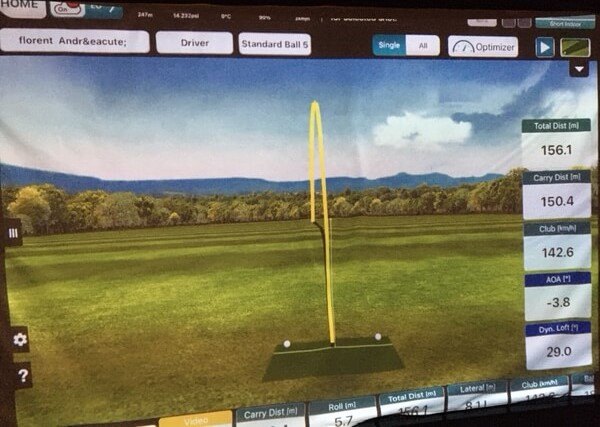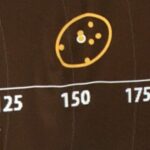I have written a fair bit about fitting. My opinions over time have varied from “everyone should get fit” to “golf fitting is a waste of time” and back again. I have actually played with clubs that have been fit for me and clubs that are miles away from what any half-decent fitter would put me in. Given that I have actually been playing less golf over the past couple of years, getting perfectly fit hasn’t been a priority. In fact, I have been happy just to get out on the course now and again and just play a few shots, regardless of what clubs were in my hands.
Time to Get Fit…..Again
This week, I will be getting fit again. So what exactly has pushed me towards this? I think my reasons are probably something that can be useful to a wide range of golfers and hopefully this article written ‘pre-fit’ will help other golfers to see whether a fitting might make sense for them.
I will, of course, be writing about the whole fitting experience as well as sharing all the numbers that come out of the fitting and what club recommendations come out as well as what I intend to do with my bag after this analysis.
I am no stranger to fitting really. I have spent enough time over the years looking at launch monitor data and playing with different clubs and club set-ups to understand probably better than the average golfer what these numbers mean and how they might affect equipment choices as well as on-course performance. If you look at my review of one of my single length irons sets from a few years ago, the Pinhawk irons from Value Golf, you can see that I was already quite interested in club data.
I have had a good friend of mine telling me for the last few years that I should get myself fit and then choose a set that actually corresponds to the results of this fitting. He is right of course, but once again, playing less golf meant that I just couldn’t see the point really. So what has changed?
Has My Swing Slowed Down?
The most obvious thing is age. I am far bigger than the average golfer at 6 ft 6 inches (nearly 2m) tall. I have been lucky enough to play sport at a decent level and certainly still enjoy physical training. I have, as a consequence, been fit into some pretty stout shafts over the years. My current irons have project x 6.5 shafts in them and this is a heavy, stiff shaft.
This isn’t a shaft that I just pulled out of nowhere either. In fact, I was fit by Mizuno into this exact set up (Mp 64 irons, one inch over, 2 degrees upright, jumbo grips). This shaft was regularly thrown out by the shaft optimizer, that great Mizuno gadget that gives shaft recommendations based on your swing with a club equipped with it. All good then? I am in my perfect set up, right? Actually, no.
When I was fit into this shaft, one of the key numbers was my swing speed. With a seven iron, I was generally around 90 miles an hour. This isn’t lightning fast, but allied to the rhythm of my swing, the way I was making the shaft kick and the fact that I was playing over length shafts with my vertical swing meant that this type of shaft worked really well for me. I hit the ball very high, unfortunately partly due to getting a bit flippy now and again, but this shaft at least helped to control these moon balls and got the ball going forward.
However, I am not 28 anymore. I am not even 38. The next big milestone for me will be 50. I recently had a scan on my shoulders that are battered from years of contact sport and the inevitable diagnosis of arthritis as well as tendinitis wasn’t a surprise. When I go in for the fitting, I won’t be swinging a seven iron at 90 miles an hour anymore and, honestly, I am not sure that would even be good for me.
Time for Graphite Iron Shafts?
So there are clearly areas where I want to make some pretty big changes. Obviously, shaft is going to be one of them. I have played graphite shafts in a couple of sets out of the many I have owned over the years, but never for very long. It was always just an approximate guess at what might work too, mainly while I was struggling with some elbow issue. Now, if I want to continue playing golf (and I hope to play more this year) I can’t be having 130g steel re bar in my clubs. If I am going to take the step into graphite, I need some numbers to make this choice.
This is pretty important to me. As much as I want to have something that will be easier on my joints and probably less stiff/heavy than I currently play, I don’t need senior super-light shafts just yet! I want to find something that still lets me enjoy the thing that gives me the most pleasure on the course, a well-struck iron shot. I don’t want to lose the feeling of control that I have enjoyed over the years.
It is important to say that I am completely open to the data. If a lady’s flex 50g iron shaft gives me the best numbers, this is what I shall look at. However, I am not blinded by distance. I don’t want an iron that is going further just fr the sake of it. Having a seven iron that flies 200 yards of whatever, might be awesome on the monitor, but in reality, how does this help on the course? The fact that it does this because it is very light and has 28 degrees of loft is something that sells clubs to golfers who are unaware of how manufacturers use loft to push the whole “more distance” thing.
If my seven iron is doing this, but I am also unable to control direction as well, and have 20 yards between longest and shortest shots doesn’t help me. In fact, one of the least-pleasant parts of having my other graphite set was seeing the ball occasionally absolutely take off and disappear over the back of the green. I mean, what’s the point?
Dialing in Accuracy
I want the best of both worlds. I do want distance of course, but most of all I want consistent distance that isn’t too long and creates gaps. As an example, a few years ago, I attended a demo day at my local course with Callaway. I was still swinging a club pretty quickly at this time but the rep was desperate to get me into a relatively light graphite shaft, one of the Recoil range. Now, these are very nice shafts and I have a feeling they might come out near the top when I do my fitting, but it wasn’t the best option for me at that time.
I watched ball after ball with the latest Apex seven iron flying absolutely ridiculous distances. It was extremely comfortable to hit too. The rep enthusiastically showed me the numbers and couldn’t understand why I wasn’t already getting my credit card out of my wallet and ordering. Apart from the cost, the main reason was, as I tried to explain to him, a problem of gapping. If my pitching wedge now goes 160 yards or whatever, what happens next? I now need about three gap wedges!
To me, iron play has always been about distance, but precise distance, not absolute distance. Now that I don’t hit the ball as far, this is still the case. I am fine with a pitching wedge that flies 125 yards if that is what is does, as long as it does it every time.
The other thing that has changed and why I think a fitting is important is in terms of clubhead. I have always preferred great-looking irons. In truth, I will always have a set of blades in a back up bag because I enjoy both the aesthetics and the pleasure that comes from hitting blades. However, I am not someone who is going to be golfing three times a week. I rarely hit practice balls at all, both for time constraints (I prefer my limited golfing time to be on the course) and also because I really want to preserve me joints. Bashing balls, especially on mats, isn’t doing this.
Do I Need “Game Improvement”?
I am naturally a pretty good ball-striker with irons. I am fairly sure that even when I don’t play much, I can still hit a bladed short iron reasonably well. However, this doesn’t mean that I hit them bang out of the middle all the time. When you are trying to stick it close, a slight mishit with a short iron isn’t good. With a blade, it can mean missing the green, finding yourself in a bunker or the rough.
With mid and long irons, this is even more true. I had already taken the four iron out of the bag and as much as I do hit some lovely five irons which give me a lot of pleasure, I probably need to be realistic about my ability to do this every time. This point was really hammered home the other day while I was in my favourite golf shop. I was looking at a few things and hitting a few balls into the monitor screen.
It was obvious that there were as many less-than-perfect shots as solid strikes. Not many horrors really, but I was certainly making use of more of the face than in the past. I then hit a few with the Wilson Launchpad iron that was lying around. This is a long way away from my current irons, but it isn’t something I have never tried. In fact, I have hit all sorts of irons. However, it was a joy to feel that I could just step up to the ball with a 5 ‘iron’ and be very confident of getting a great result. I am just making the game harder by not gaming these type of clubs.
I am also someone who rarely has a full bag and my regular club set up, even at my version of a full bag, might be around 11 clubs. Sometimes, my minimalist approach might be several clubs less than that. In order to make this work, I need to be smart in terms of my bag. The easiest way to do this is by going through a fitting and seeing just what each club does in terms of distance and ball flight, for example. My final choice might well be some sort of combination of hybrid irons, sleeker short irons, wedges, lofted fairway woods and so on. This needs some trial and error, experimentation and most of all some hard numbers off a monitor.
A Golf Shop Fitting
You might be expecting me to go through a full bag fitting with an independent club fitter. Maybe try out something boutique Like Miura with an aftermarket shaft that was made in a secret lab in Japan? This won’t be the case. I will be doing this fitting (or at least, the first part of it) in my local golf shop here in France, La Maison du Golfeur. This might seem like a less than amazing option, but I think it is something that makes sense for many golfers.
Obviously, you probably won’t want to travel to France for your fitting, but I think you might want to look for something similar if you want to see what equipment might work best. There are a few good reasons for this.
Firstly, like many keen golfers, I spend a fair bit of time in this shop, looking at putters, swinging a few clubs in the hitting area or just generally chatting golf. This costs me nothing and the two people who own the shop are always happy to let me do this. This fitting will cost me nothing outside of what I choose to order through them. which brings me on to point two.
Secondly, the owners really do know their stuff and I have known them for a long time. They aren’t going to try to sell me whatever they have in stock and I know that if I don’t find the right set up, I will simply not order and they will be fine with this too. I love the fact that this shop exists. I am sure that I could find anything that comes out of the fitting (very slightly) cheaper if I really hunted around online. I won’t be doing this. I am happy to pay their perfectly reasonable prices for the service they give me.
Thirdly, they have a very nice set up for trying clubs. There is an excellent hitting bay with Trackman set up. It is also calibrated in a reliable way. I won’t see any seven irons flying 200 yards on a launch monitor turned all the way up to 11. Trackman is going to give me a huge amount of data and I absolutely love this. It will certainly help point me towards what my new bag set up might be, but it is also giving me a lesson, a mini-check up on the state of my game. I will get everything from swing speed to angle of attack and club path.
Finally, and this is a huge one, I am fairly sure that when I have spent a couple of hours working through the different combinations of head and shaft, they will happily give me a demo club and let me take it to the course to see what actually happens when I use it to play golf.
Trying the Clubs On-Course
This is of course really important. I have heard countless stories of golfers buying clubs that are just perfect on the monitor but don’t help them play better golf. A monitor isn’t the same as playing shots on the course. You have different lies, wind, trees….everything that makes golf what it is. When I find something that suits me eye, gives me the numbers I want and yes, fits in my budget, I then want to take it on the course and know that I can play golf with it too.
I am, as you can probably tell, excited to spend a couple of hours looking at options for my game. I will obviously report back afterwards with a full report on the whole fitting process and we’ll see what comes out as the next potential iron set in my bag.






